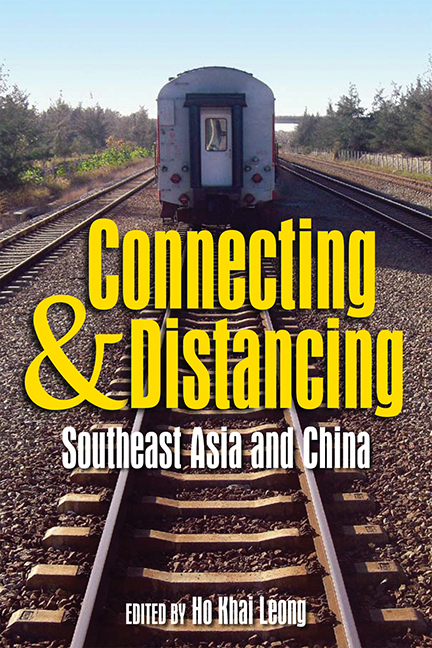Introduction
Published online by Cambridge University Press: 21 October 2015
Summary
“Connecting” and “distancing” have been two prominent themes permeating the writings on the historical and contemporary developments of the relationship between Southeast Asia and China. As neighbours, the nation-states in Southeast Asia and the giant political entity in the north communicated with each other through a variety of diplomatic overtures, political agitations, and cultural nuances. The people felt a need to connect even in the worst of times when governments were not on the best of terms. “Connecting” is a two-way street. It denotes a deep influence of Chinese presence in the region since the sixteenth century in the areas of trade, culture and politics, as well as Southeast Asia's enduring bewilderment and perplexity about its giant neighbour. The rise of China and the recent influx of Chinese immigrants in the region added to the already influential and considerable presence of China. In the last two decades with the rise of China as an economic powerhouse in the region, Southeast Asia's need to connect with China has become more urgent and necessary as it attempts to reap the benefit from the successful economic modernization in China.
At the same time, however, there were feelings of ambivalence, hesitation and even suspicions on the part of the Southeast Asian states vis-à-vis the rise of a political power which is so little understood or misunderstood. Much of these negative thoughts admittedly were remnants of historical experiences; some are possibly even related to the growing soft and hard power influence of the People's Republic of China. “Distancing”, therefore, refers to the attitudes and policies of these nations’ attempts to maintain their sovereign rights as well as political and cultural autonomy in the midst of a rising empire and regional hegemonic power.
To a large extent, the perpetual tensions between idealist expectation and realist necessity have defined Sino-Southeast Asia relations in the last few decades. How Southeast Asia and China should best deal with one another becomes a central question in this complex relationship.
Information
- Type
- Chapter
- Information
- Connecting and DistancingSoutheast Asia and China, pp. xi - xviPublisher: ISEAS–Yusof Ishak InstitutePrint publication year: 2009
